
final drawing.
procedurally drawn film.
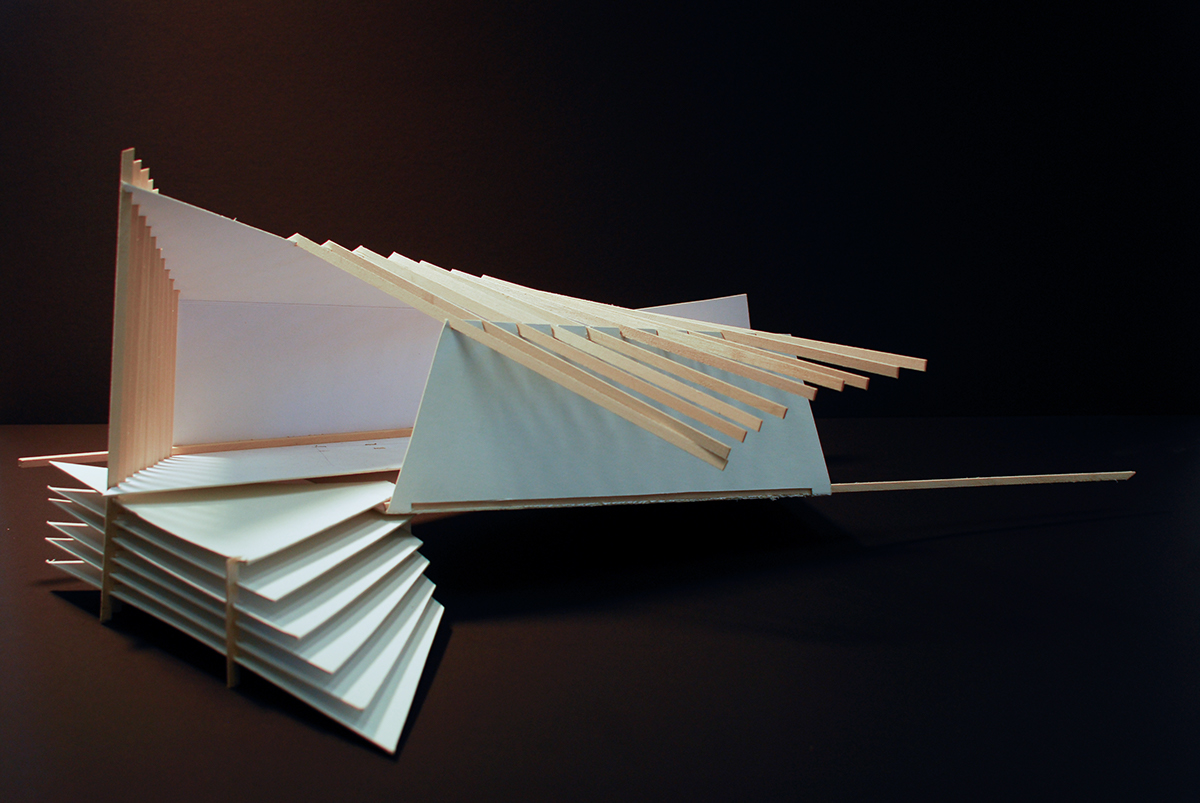
final structure.

final structure.

final structure.
final structure.
final structure.
final structure.
final structure.
final structure.
final structure.

final structure.

final structure.

final structure.
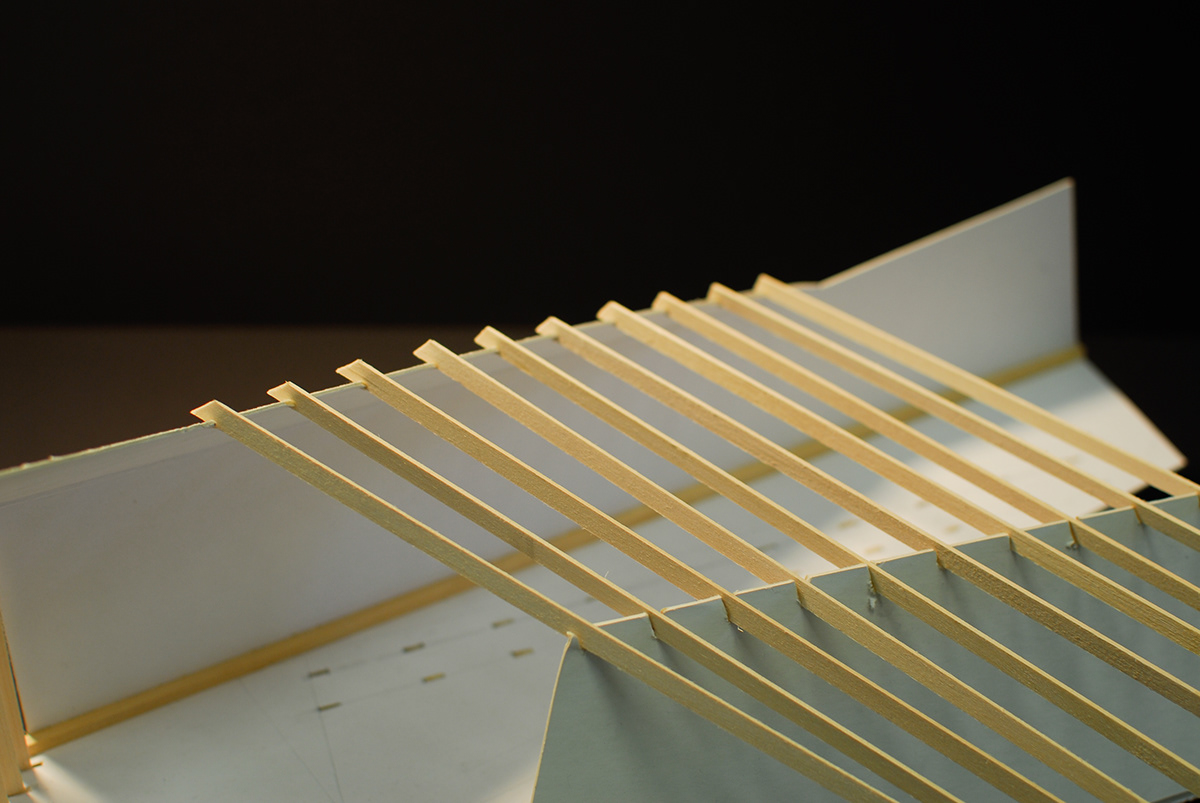
final structure.

final structure.

final structure.

final structure.
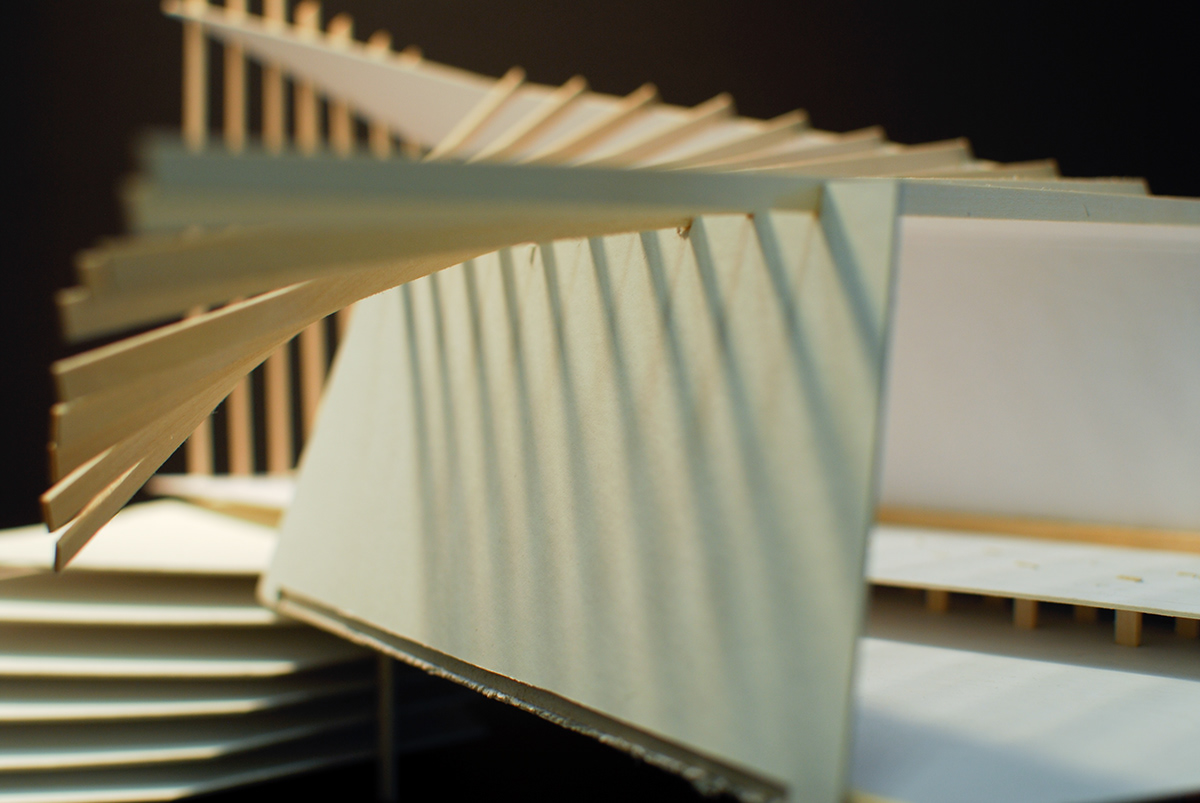
final structure.

final structure.

final structure.
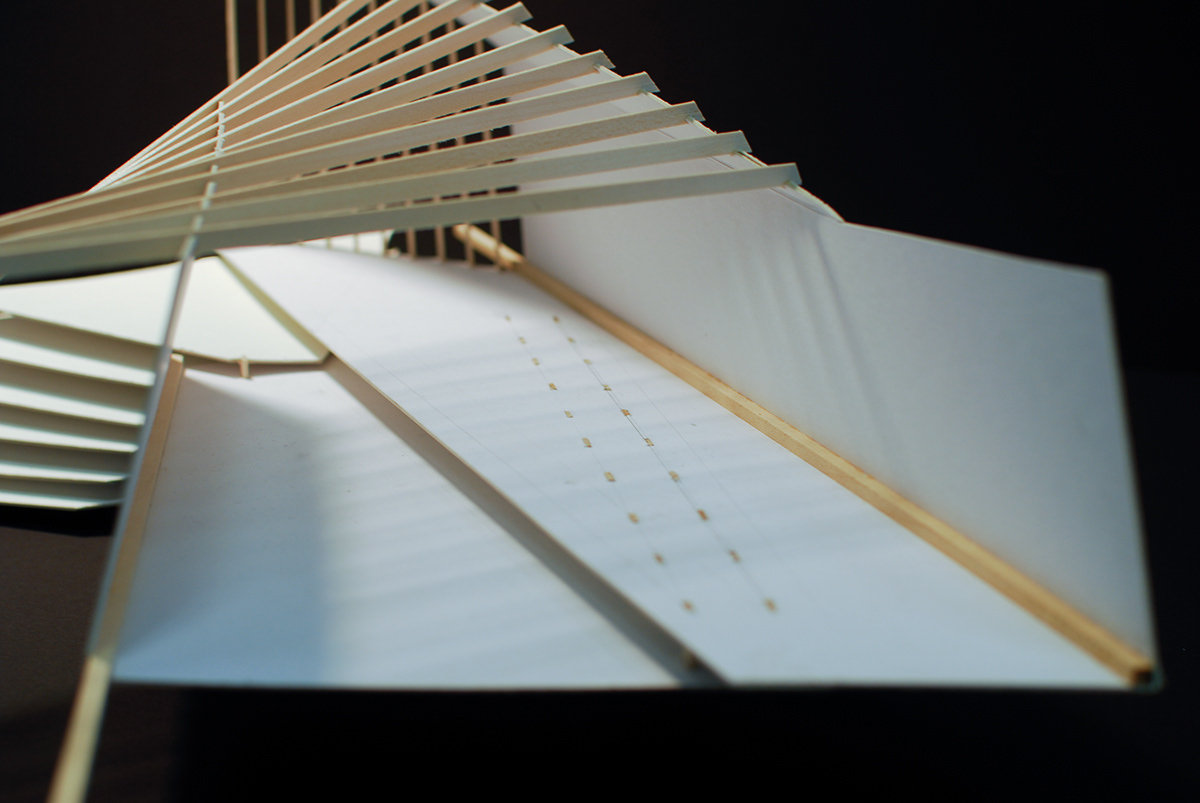
final structure.

final structure.
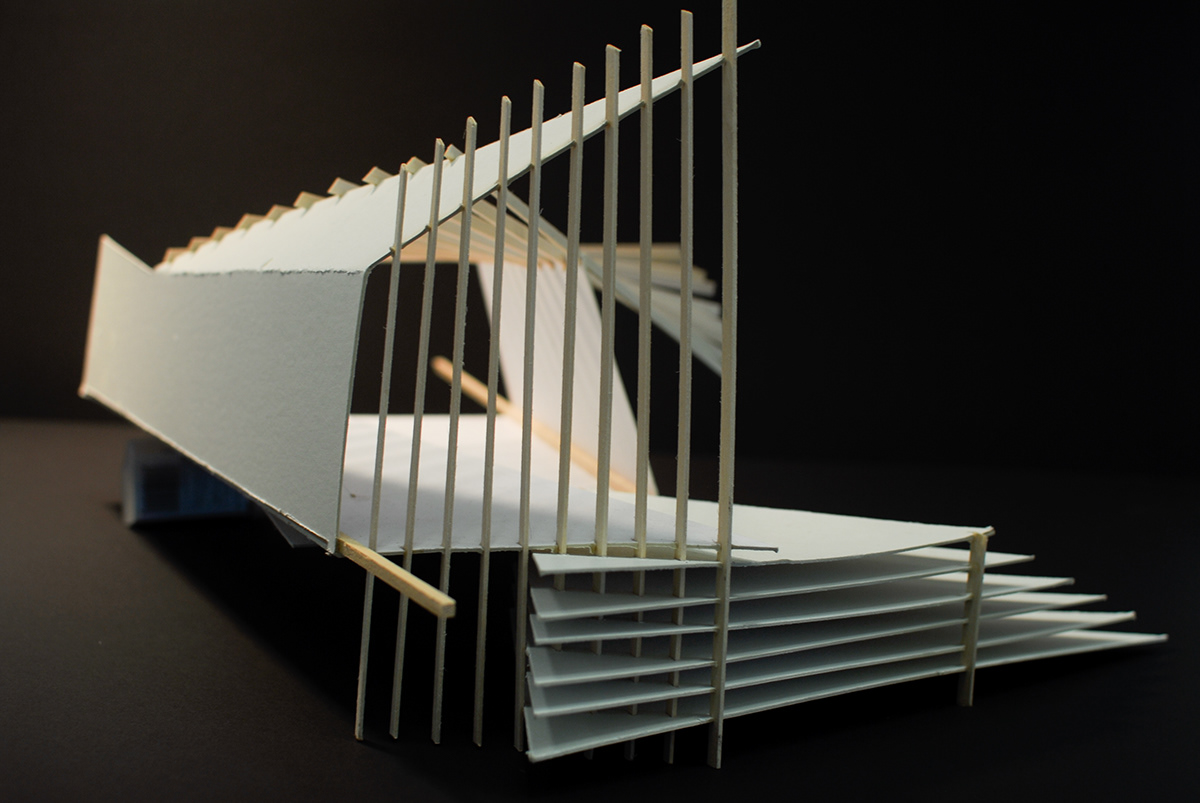
final structure.
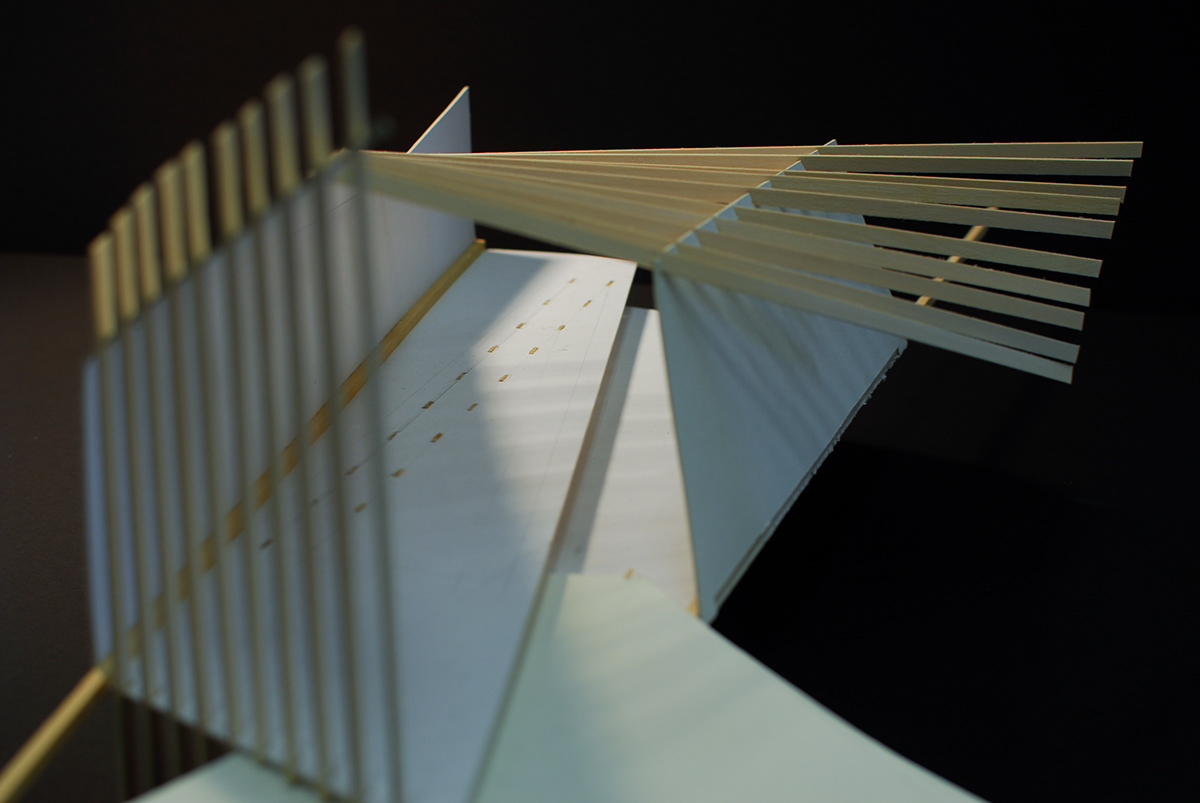
final structure.
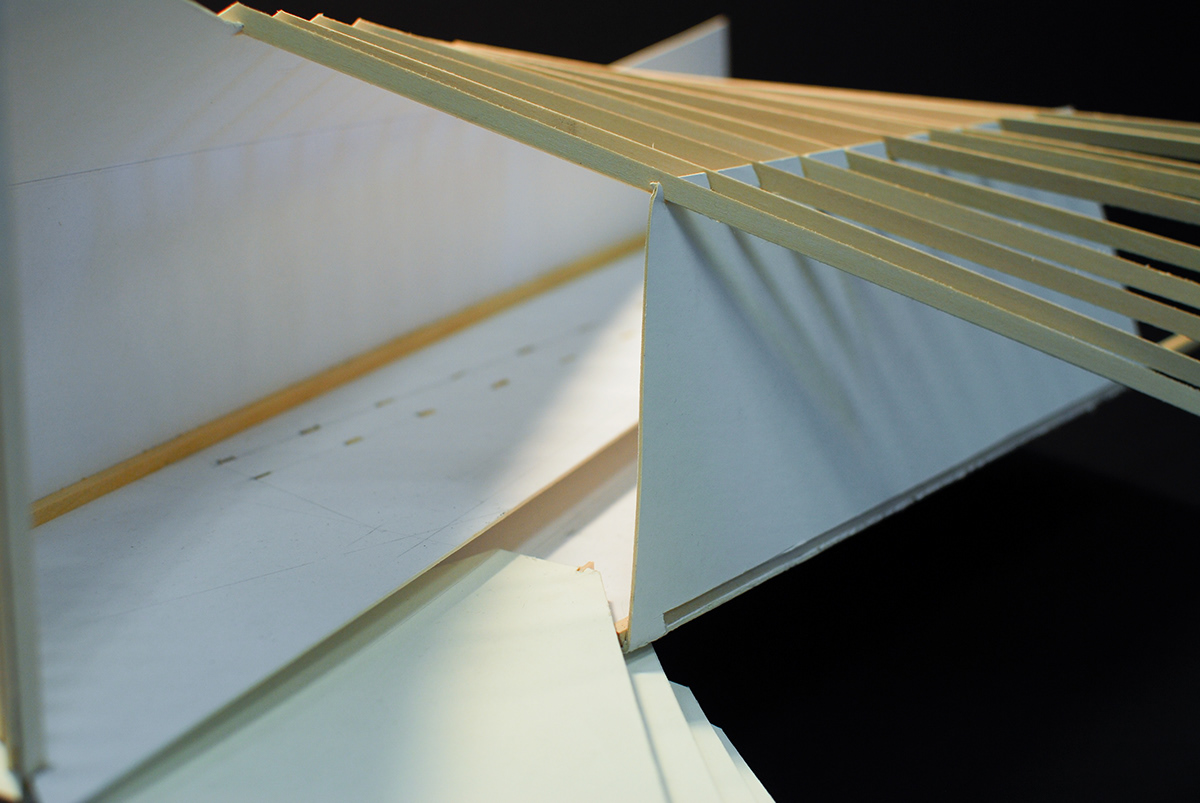
final structure.
process model.
process model.
process model.
process model.

final draft: elevation.
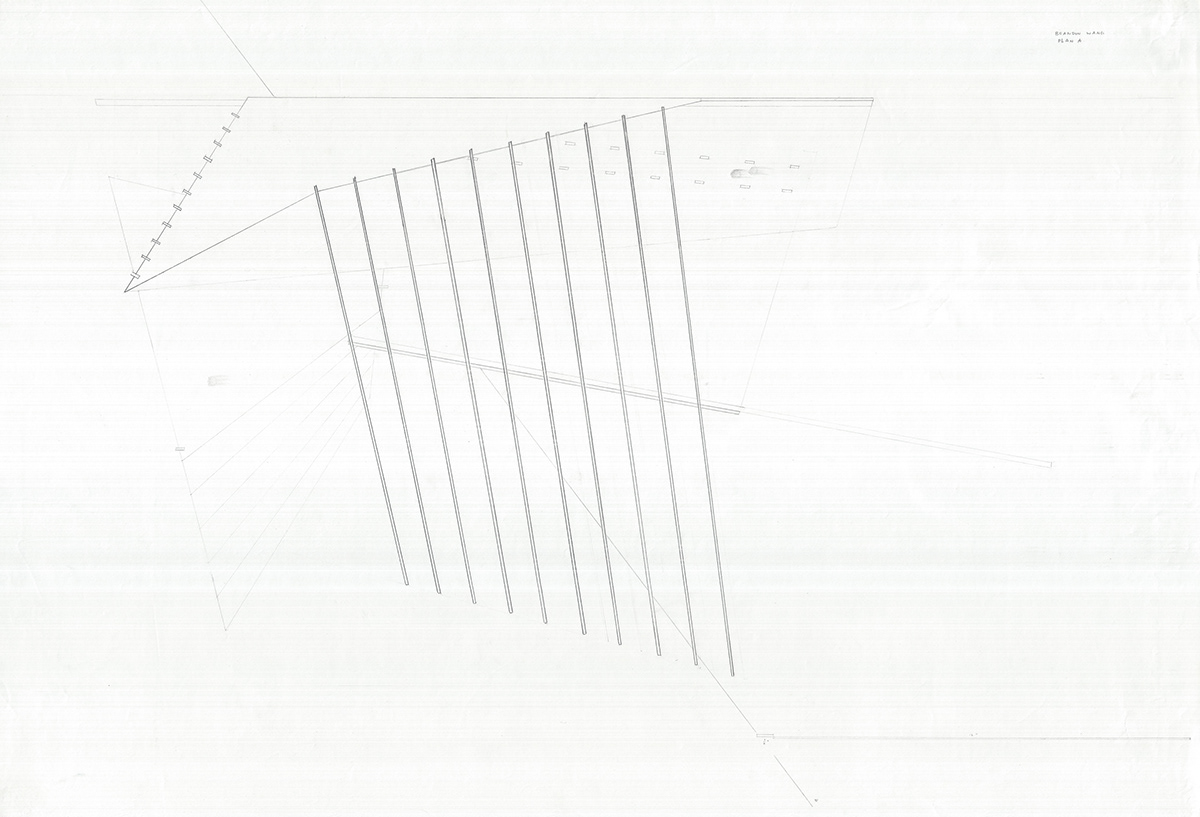
final draft: plan.

final draft: section a.

final draft: section b.
// A Space for a Dance
Done for Professor Carl Lostritto
RISD
Much like A Dance for a Line, this project starts with a film guided by self-established rules of application and order; however, the creation of this film is no longer restricted to line marks, but can include both planar marks (broad side of the conte crayon) and erasures. The frame rate is also self-chosen, deeming it possible to vary speeds and paces of specific intervals of the film. I approached with the utilization of “families”, a specific combination of line, plane, and erasure, which became the crux of the construct to follow. The form of the construct is informed by the integration of “families” within each other, and the creation/termination of the drawing as references as threshold of entrance and exit. Also to be considered in the construct were means of entry (the sloped ground will be detailed later), exit, and perforations for passages of light and air.
As this project, unlike the first, a ground was introduced, giving another variable in the formalization of the construct: gravity. Becoming less abstract and more architectural, this construct sits upon a ground angled between 10° and 30°, which I chose to be 15°. A score was made, resulting in both flat and angled planes acting as the ground; the greater area received the angle. In addition, this construct or “space” would ideally house a dance: I chose a waltz. Fluidity and uniformity became indicators of form and structure.
With the theoretical procedure of construction and the ground upon which the construct would stand now set, the creation of the construct begins. It began with logical interactions between line and plane of the “families”, with the erasure being the space created. Through prototypical models, that interaction developed to a single folding of the plane (board) and the line (column) inhabiting the fold. Externally, the fold would expose the column for articulation and structural clarification purposes. The lines would also begin to introduce complexity by means of repetition, forming “series”. Boundaries would be established not only by walls (plane) but also “series”, a derivation off the column. The “series” would complicate and push to the limit the system of “families” without losing logic. “Series” could vary in length, as short (seen as connections between the two levels) and extensive (roof-like organization of columns that act as threshold separators). Also, as the contained and external spaces matured and complicated yet retained its essential voids, the arrangement of the spaces becomes crucial to the organization of the dance conceived. It is this very specifically driven means of specialization and critical development of all elements of the construct that enriches and pushes systematic order without becoming arbitrary, ambiguous, or disorderly.
The final construct consists of two levels, connected by the system of “series”, a set of stairs acting as the entrance, and large columnar protrusions acting as structural support. The organizational spaces are deployed by the creation of the filmed drawing, the implementation of “families” and systems of “series”, and the integration into the sloped landscape. Analytical consideration for the ground and structural and specific design are crucial to the final formalization of the construct.




